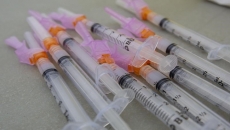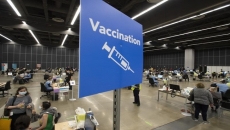The Canadian economy appears to have bounced back after its worst two-month stretch since the start of the pandemic, eking out a gain in June and growth in the second quarter of the year.
Statistics Canada said its preliminary estimate is that real gross domestic product grew at an annualized rate of 2.5 per cent between April and June, buttressed by a 0.7 per cent rise in June as pandemic restrictions eased following declines of 0.5 per cent in April and 0.3 per cent in May.
Industrial product and raw materials price indexes, June 2021: The IPPI was unchanged month over month in June and up 16.8% compared with June 2020. https://t.co/pakjB0UEKa pic.twitter.com/5DLTv2XqUC
— Statistics Canada (@StatCan_eng) July 30, 2021
The decline in May put total economic activity about two per cent below pre-pandemic levels seen in February 2020. The agency said that with growth in June, total economic activity was about one per cent below pre-pandemic levels.
Getting through the last one per cent may not take much longer, even though some sectors have longer to go than others, said Desjardins chief economist Jimmy Jean.
Restrictions are rolling back in much of the country as vaccination rates rise, and with early indications suggesting a boost in activity, the country should see a pretty strong rebound in the third quarter absent any hiccups, Jean said.
"I think we will also be talking about the Canadian economy having fully recuperated its pre-pandemic losses," he said.
"That's an important milestone, but I think we also have to remember that we're still not quite there when it comes to the labour market. That's where there's still quite some ways to go."
The uneven recovery in sectors prompted the federal government on Friday to announce it was extending aid to businesses and workers until Oct. 23, and freezing benefits at current rates.
Speaking in Hamilton, Ont., Finance Minister Chrystia Freeland said the government wanted to ensure small businesses in particular have the support they need so the country can have a full and robust recovery.
The GDP figures Friday outpaced the Bank of Canada's forecast earlier this month that the economy would grow at an annualized rate of two per cent in the second quarter. The central bank expects the economy to grow at an annualized rate of 7.3 per cent this quarter.
"Spring lockdowns in much of the country triggered the first monthly GDP declines in a year, but those setbacks are expected to be reversed in relatively short order, with June's rebound alone almost doing the job," said BMO chief economist Douglas Porter.
For May, Statistics Canada said retail declined by 2.7 per cent after a drop of 5.7 per cent in April as the sector was weighed down by restrictions on in-person shopping meant to combat the third wave of COVID-19.
The accommodation and food services sector was similarly affected by restrictions and declined by 2.4 per cent in May, which was not as bad as the 4.3 per cent drop in April.
Statistics Canada said manufacturing declined 0.8 per cent in May, marking the third contraction in four months.
The agency also noted that residential building construction dropped 4.2 per cent in May, down for the first time since November 2020, and a decline of 0.4 per cent in the real estate sector as home resale activity slowed.
"As housing sales and construction levels gradually return to more sustainable levels, this area of the economy could be a drag on growth in coming months," noted TD senior economist Sri Thanabalasingam.
Statistics Canada said the easing of public health restrictions in many provinces in June helped reverse the slide in sectors reliant on in-person services, like retail, accommodation and food services, which all saw growth.
The agency adds that there were also gains in manufacturing in June, while construction and wholesale trade appear to have contracted.
The figures for June and the second quarter will be finalized at the end of August.
CIBC senior economist Royce Mendes said the economy has some open road to recover more lost ground this summer with virus cases generally low across the country.
"That said, there remain challenges on the horizon, most notably in the form of variants of the virus which have slowed progress towards healing in other developed economies," he wrote in a note.






